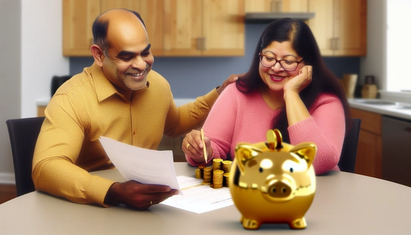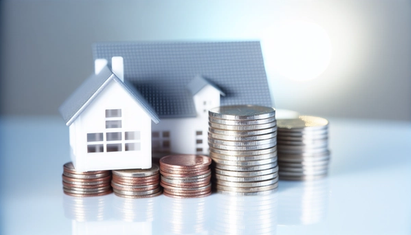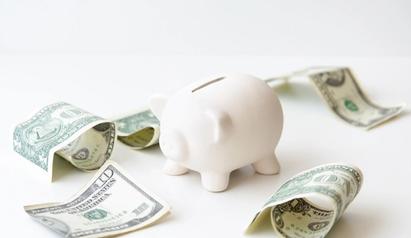Hybrid Mortgages Explained: Pros, Cons, How They Work
Written by:
Marianne Hayes
Marianne Hayes
Personal Finance Writer
Marianne Hayes is a contributing writer for Own Up. She has been covering personal finance and home ownership for over a decade.
See full bio
Fact Checked by:
Dan Silva
Dan is the Vice President of Marketplace Lending at Own Up. Throughout his career, he has held executive leadership positions in the mortgage and banking industry.
See full bio

A hybrid mortgage is a cross between a fixed-rate loan and an adjustable-rate mortgage. They allow homeowners to enjoy a fixed interest rate for a certain amount of time. After the introductory period ends, the rate will periodically adjust going forward. Like other types of home loans, hybrid mortgages have pros and cons. Here’s a closer look at how they work so you can decide if it’s right for you.
What is a Hybrid Mortgage?
With a fixed-rate mortgage, your interest rate will stay the same for the life of the loan. That can help stabilize your monthly mortgage payment and prevent unwanted rate hikes down the line. On the other side of the coin, interest rates on variable-rate mortgages – also known as adjustable-rate mortgages – can change.
Now: Enter the hybrid mortgage. A hybrid mortgage is a type of loan that blends features of both. You’ll start with a fixed initial interest rate that will change at regular intervals. The updated rate will reflect current interest rate trends. So if mortgage rates are trending upward, your rate could go up during an adjustment period. The opposite is also true.
What Affects Mortgage Rates?
Interest rates fluctuate and can go up or down as times change. You’ve probably noticed that rates in general are on the rise. To help cool inflation, the Federal Reserve increased its target interest rate four times in 2023. This figure affects rates on credit cards, personal loans, savings accounts, and mortgages – which, in turn, impacts homebuyers. If a mortgage lender is being charged more to borrow money to make their loans, they’ll likely pass those costs on to their borrowers.
What Are the Different Types of Hybrid Mortgages?
Hybrid mortgages often begin with a low-interest introductory period. After that, the rate will change at predetermined intervals. You’ll likely see hybrid mortgages expressed as a ratio – the first number represents the length of the introductory period; the second number tells you how often the rate will be adjusted after that. This is usually every six months or annually. A 5/1 hybrid mortgage, for example, has a fixed rate for five years. When that period ends, the rate will change every year.
How Do Rate Caps Work?
If you opt for a hybrid mortgage loan, there are limits on how much your rate can increase. Here’s a breakdown of rate caps, according to the Consumer Financial Protection Bureau:
- Initial interest rate cap: This is how much your interest rate can increase during the first adjustment period. It generally maxes out at 2% or 5%.
- Subsequent adjustment cap: This rate cap, which is usually 2%, tells you how much your interest rate can increase during future rate adjustments.
- Lifetime adjustment cap: This is the maximum amount that your interest rate can increase from start to finish. For most hybrid mortgages, that’s 5%.
This is why it’s important to compare mortgage lenders and read the fine print. Some may have attractive low-interest-rate periods in the beginning, but high-rate caps could come back to bite you.
What Are the Benefits of a Hybrid Mortgage?
Going with a hybrid mortgage can have its benefits. Depending on the lender, this type of mortgage may allow for higher loan amounts, which can increase your borrowing power. Here are some other advantages to consider:
Your Payments Will Likely Be Lower During the Fixed-Rate Period
The main draw of a hybrid mortgage is that it gives homebuyers a lower-than-average introductory interest rate. That could translate to a significantly lower monthly payment. At the time of this writing, the average rate on a 30-year fixed-rate mortgage is 6.95%, according to Freddie Mac. Some hybrid mortgages currently have introductory rates as low as 5.25%. That can make a big difference when you’re borrowing hundreds of thousands of dollars.
It’s Possible to Save Money in the Long Run
A hybrid mortgage can be especially attractive when overall interest rates are on the decline. In this type of environment, your rate could go down during your adjustment periods. In January 2021, the average 30-year fixed rate fell to an all-time low of 2.65%. Homeowners who had hybrid mortgages during this time may have scored big savings and lower monthly payments.
Interest Rate Caps Provide Some Transparency
If you’re shopping around for a hybrid mortgage, comparing rate caps can work to your advantage. Each lender should provide a general idea of what you can expect. By looking at the rate caps, you’ll be able to see the maximum amount that your interest rate can increase during each adjustment period and over the total life of the loan. If those numbers work for your budget, a hybrid mortgage may be worth considering.
What Are the Downsides to a Hybrid Mortgage?
Like any other type of home loan, hybrid mortgages also have their drawbacks. Keep the following details in mind before making a decision.
Your Interest Rate Could Go Up
The thing about hybrid mortgages is that no one can predict future interest rate trends. It’s possible that your rate could go down during an adjustment period – or alternatively, could jump up and hit your rate cap. The average rate for a 30-year fixed-rate mortgage spiked to 7.79% in October 2023. Homeowners who had locked in a lower fixed rate earlier were probably relieved not to have a hybrid mortgage during this time.
It Might Disrupt Your Monthly Budget
Thanks to changing interest rates and potentially high rate caps, your monthly mortgage payment could go up significantly. That could cause financial stress if your budget isn’t ready for it. One rule of thumb is to keep your monthly mortgage payment below 28% of your gross monthly income.
You Could Face Additional Costs in the Long Run
If you have a hybrid mortgage and you’re planning on staying in your home for many years, you might decide to refinance your home loan at some point. This involves taking out a new mortgage with a lower interest rate, then using that to pay off your existing loan.
Remember: Refinancing can make financial sense and help you score a lower monthly payment, but it also comes with fees. Average closing costs on a refinance are around $5,000, according to Freddie Mac. It could be higher depending on where you live and the size of your mortgage.
Are Hybrid Loans a Good Idea?
Every homeowner is different. Whether a hybrid mortgage is right for you depends on your financial situation and long-term goals.
When a Hybrid ARM Might Make Sense
This type of home loan might be a good idea if you don’t plan on staying in the home long term. You could benefit from a low introductory rate and sell the property before your first adjustment period. If you choose to stay longer, you could always refinance the mortgage down the line if your rate goes up. That’s assuming you’re financially prepared to cover the closing costs.
When to Pass on a Hybrid Arm
If future interest-rate uncertainty makes you uneasy, a fixed-rate mortgage might be a better fit. You’ll know exactly what you’re getting and can rest easy knowing that your rate will never change. It can also help you budget more effectively. While your property taxes and home insurance rates could change over time, your mortgage rate will remain stable. That can be especially appealing if you intend to stay in the home for a long time.
The Bottom Line
Hybrid mortgages have unique benefits that could be appealing. Borrowers can enjoy a low-rate introductory period, which could result in a lower monthly payment. But if interest rates rise in the future, it could lead to a higher payment and financial stress. Only you can decide if a hybrid mortgage is the right choice. Let your financial situation and long-term goals be your guide.


